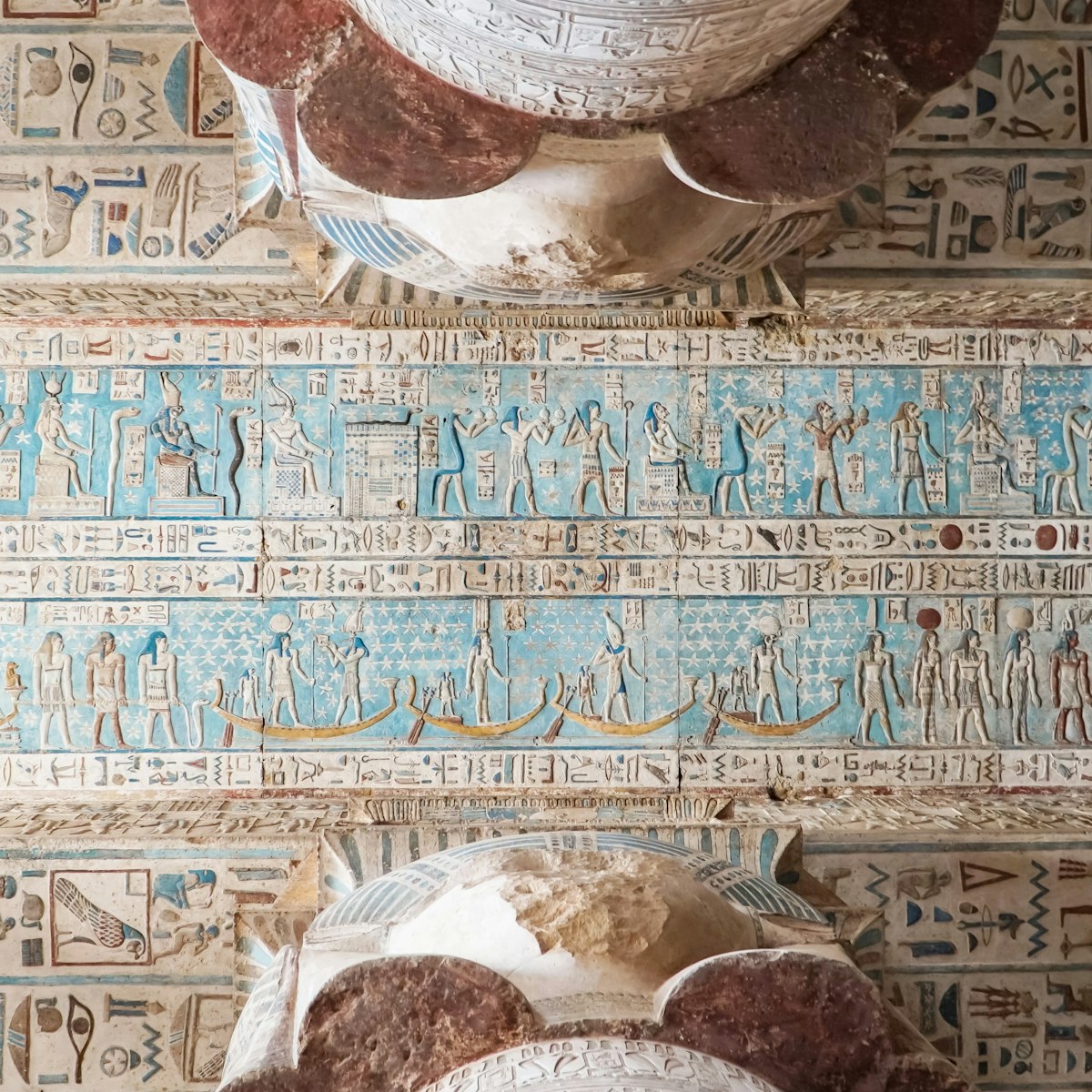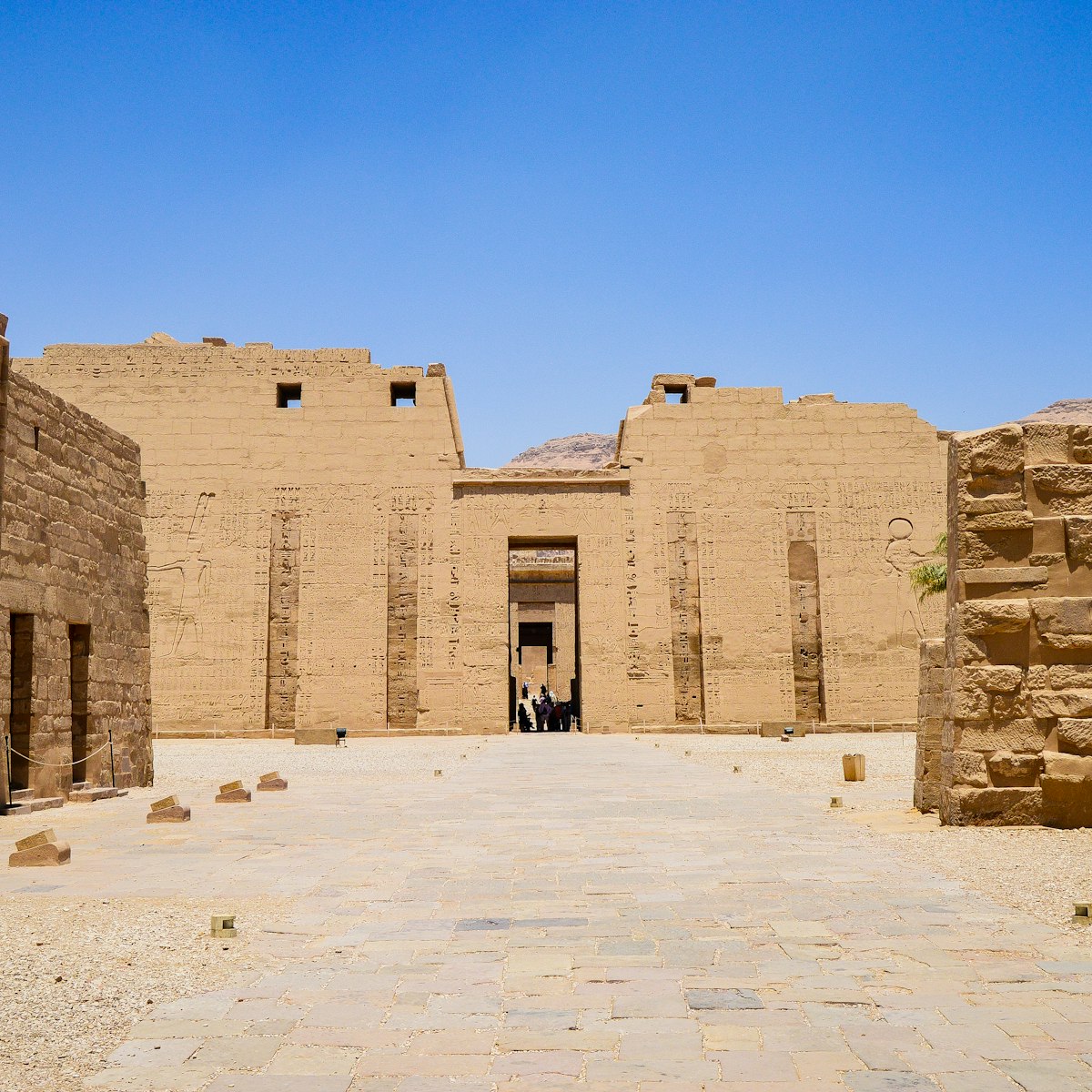The story of the celebrated discovery of the famous tomb and all the fabulous treasures it contained far outshines the reality of the small tomb of a short-lived pharaoh. Tutankhamun’s tomb is one of the least impressive in the valley and bears all the signs of a rather hasty completion and inglorious burial, as well as significant damage to the decorations. In spite of this and of the existence of a more instructive replica, many people choose to visit.
The Egyptologist Howard Carter slaved away for six seasons in the valley and in the end was rewarded with the discovery of the resting place of Tutankhamun, with all its treasures, the most impressive haul ever made in Egypt. The first step was found on 4 November 1922, and on 5 November the rest of the steps and a sealed doorway came to light. Carter wired Lord Carnarvon to join him in Egypt immediately for the opening of what he hoped was the completely intact tomb of Tutankhamun. When he looked inside, he saw what he famously described as 'wonderful things'.
The son of Akhenaten and one of Akhenaten’s sisters, Tutankhamun ruled briefly (1336–1327 BC) and died young, with no great battles or buildings to his credit, so there was little time to build a tomb. The tomb had been partially robbed twice in antiquity, but its priceless cache of treasures vindicated Carter’s dream beyond even his wildest imaginings. Four chambers were crammed with jewellery, furniture, statues, chariots, musical instruments, weapons, boxes, jars and food. Even the later discovery that many had been stuffed haphazardly into the wrong boxes by necropolis officials ‘tidying up’ after the ancient robberies does not detract from their dazzling wealth. Some archaeologists believe that Tutankhamun was perhaps buried with all the regalia of the unpopular Amarna royal line, as some of it is inscribed with the names of his father Akhenaten and the mysterious Smenkhkare (1388–1336 BC), who some Egyptologists believe was Nefertiti ruling as pharaoh.
Most of the treasure is in the Cairo Museum, with a few pieces in Luxor Museum: only Tutankhamun’s mummy in its gilded wooden coffin and his sarcophagus are in situ. The burial chamber walls are decorated by chubby figures of the pharaoh before the gods, painted against a yellow-gold background. The wall at the foot end of the sarcophagus shows scenes of the pharaoh’s funeral; the 12 squatting apes from the Book of Amduat, representing the 12 hours of the night, are featured on the opposite wall.
The extra ticket needed to enter the tomb can be bought at the Entrance Gate & Ticket Office for Tutankhamun's Tomb.
An exact replica of the tomb and sacrophagus, as well as a full explanation of the rediscovery of the tomb, has been installed in the grounds of Howard Carter's house.
Work was underway at the time of writing to determine whether there is another chamber beyond the back wall of the burial chamber: Egyptologist Nicholas Reeves has suggested that the tomb might originally have been used to bury Nefertiti, whose remains – and perhaps her treasure – might lie beyond the wall.








